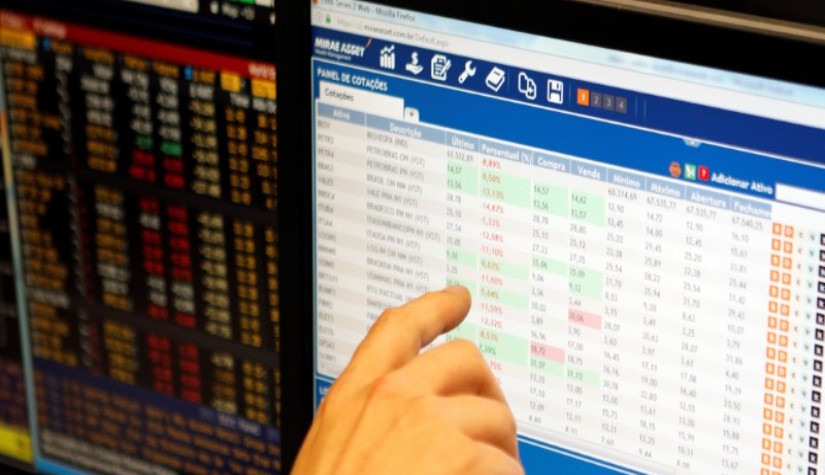Asia's Cautious Market Open Amidst Global Concerns and China's Economic Woes
Asian markets opened cautiously on Monday following Wall Street's decline and a surge in oil prices on Friday. This is against the backdrop of escalating violence in the Middle East and in anticipation of key Chinese economic data later in the week. On Friday, Asian stock markets faced significant declines, with China leading the downturn as its Consumer Price Index (CPI) for September showed no growth. Analysts express concern that weak economic indicators from China could have implications for the global economy.
The situation in the Middle East, particularly the conflict between Israel and Hamas, adds to the market's nervousness. This geopolitical tension is reflected in the fragile sentiment in Asian markets, with Japan's Nikkei down by as much as 2%.
The International Monetary Fund (IMF) has warned that China's weak recovery and the risk of a prolonged property crisis could negatively impact Asia's economic prospects. The IMF noted that China's post-lockdown economic boost lost momentum earlier than anticipated. China's new bank loans in September were softer than expected, with household loans, including mortgages, rising significantly. Despite economic challenges, China's trade ties with Russia have strengthened, with the growth of exports and imports between the two nations quickening.
In its World Economic Outlook, the IMF revised down Asia's growth estimate for next year to 4.2%, emphasizing the significant impact that a slowdown in China can have on the global economy. The IMF urged caution for central banks in Asia, suggesting that, despite moderating inflation, they should not rush into cutting interest rates.
Singapore's economy showed better-than-expected growth in the third quarter, while India experienced a decline in retail inflation to a three-month low in September. However, India's inflation remains above the central bank's target of 4%.
Meanwhile, the U.S. economy's focus on the service sector, which does not drive demand for imports or exports, has provided less support to Asia than in the past, according to the IMF. Throughout this year, Asian central banks have actively defended their currencies against a robust U.S. dollar, depleting foreign exchange reserves to multi-month lows. Despite these efforts, they have struggled to reassure markets and curb capital outflows.
The currencies of Emerging Asia have experienced significant volatility, caught between China's efforts to protect the yuan and a strengthening dollar supported by an increasingly hawkish Federal Reserve. However, this intervention has not assuaged investor concerns about diminishing returns in emerging markets, given the rise in dollar yields.
As the week progresses, investors will closely monitor key economic indicators from Japan, Indonesia, and India. However, the most crucial day is expected to be Wednesday when China releases important economic data, including unemployment, industrial production, retail sales, and business investment figures for September, along with third-quarter GDP. The outcome of these releases will likely influence market sentiment and investment decisions in the region. As a result, it could impact the Asian stock market, with Japan specifically expected to remain stable in the near term. However, there is a likelihood of enduring pressure in the long run due to the more pronounced slowdown in the Chinese economy.
Data for Technical Analysis (5H) CFD JP225 Nikkei 225 Futures - Dec 23
Resistance : 32179.0, 32251.0, 32367.5
Support : 31946.0, 31874.0, 31757.5
5H Outlook
Source: Investing.com
Buy/Long 1 If the support at the price range 31796.0 - 31946.0 is touched, but the support at 31946.0 cannot be broken, the TP may be set around 32179.0 and the SL around 31746.0, or up to the risk appetite.
Buy/Long 2 If the resistance can be broken at the price range of 32179.0 - 32329.0, TP may be set around 32367.0 and SL around 31896.0, or up to the risk appetite.
Sell/Short 1 If the resistance at the price range 32179.0 - 32329.0 is touched, but the resistance 32179.0 cannot be broken, the TP may be set around 31870.0 and the SL around 32379.0, or up to the risk appetite.
Sell/Short 2 If the support can be broken at the price range of 31796.0 - 31946.0, TP may be set around 31758.0 and SL around 32229.0, or up to the risk appetite.
Pivot Points Oct 17, 2023 02:30AM GMT
|
Name
|
S3
|
S2
|
S1
|
Pivot Points
|
R1
|
R2
|
R3
|
|---|---|---|---|---|---|---|---|
| Classic | 31565 | 31757.5 | 31870 | 32062.5 | 32175 | 32367.5 | 32480 |
| Fibonacci | 31757.5 | 31874 | 31946 | 32062.5 | 32179 | 32251 | 32367.5 |
| Camarilla | 31898.6 | 31926.6 | 31954.5 | 32062.5 | 32010.5 | 32038.4 | 32066.4 |
| Woodie's | 31525 | 31737.5 | 31830 | 32042.5 | 32135 | 32347.5 | 32440 |
| DeMark's | - | - | 31966.2 | 32110.6 | 32271.2 | - | - |
Sources: Investing 1, Investing 2
Maximize your knowledge: Blog
















